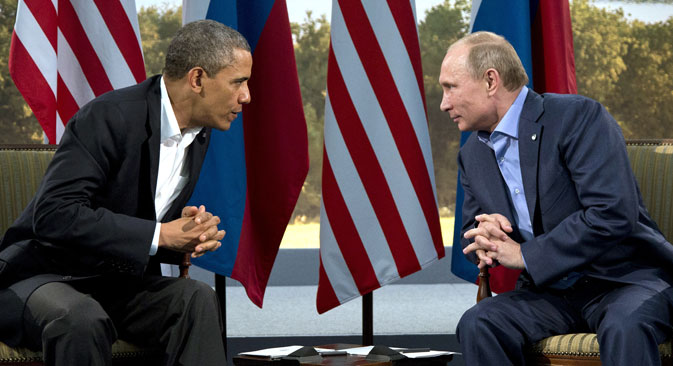
Looking in the mirror? Source: Reuters
In an exclusive interview with Russia Direct, Victoria I. Zhuravleva, Russian historian, prominent expert in American studies and author of the book “Understanding Russia in the United States: Images and Myths 1881-1914,” discusses longstanding myths that Americans have about Russia and their role in the identity process in the U.S. In addition, she talks about American political cartoons, their influence on U.S.-Russia relations.
Russia Direct: When and why did you decide to write the book on the perception of Russia in the U.S.?
Victoria Zhuravleva: I decided to write this book many years ago as a postgraduate student when I began to study Russian-American relations. Why had American myths about Russia and the stereotypes of how Americans perceived Russia proved to be so enduring?
Why would some images come to the fore and others – remain in the background? When and why had the images of Russia created within American society begun to make inroads into American foreign policy, shaping the content of that policy as well as creating the ideological justification for its approach to Russia?
All these questions preoccupied me, so I started a 10-year process of writing my book, “Understanding Russia in the United States: Images and Myths 1881-1914.”
The video contains materials from Boulder Camera (cartoon by J. Sherffius /Creators News Service), Library of Congress (cartoon by J. Costello), St. Louis Post-Dispatch (cartoon by R.J. Matson). By Pavel Gazdyuk.
I preferred to study Russian-American relations as a multi-level phenomenon, to analyze different facets of perception, and to reconstruct the main American textual discourses about Russia in their full complexity.
In order to achieve this purpose, I used the interdisciplinary methodology that came to be known as the imagology of international relations (study of international relations using the conceptual pair “Self/Other”) and a comprehensive set of sources: diplomatic and private correspondence, memoirs, diaries, travelogues, tourist guidebooks, pamphlets, American textbooks on world and European history, fiction, and of course, verbal and graphic materials of the American press, first of all, cartoons.
This is one of the main peculiarities of this book – using cartoons not as illustrations, but as primary sources for study the perceptions of Russia in the U.S.
RD: Why do you focus on this period of U.S.-Russia relations (late 19th to early 20th centuries)?
V.Z.: This period of time is very important in the history of U.S.-Russia relations because, for the first time, we could see their real evolution from “the equation of Russian-American friendship” through the first crises of 1903-1905 and the first “war of images” in the American press to the period of rapprochement between the two countries during the First World War and to the new American cycle of hopes and disappointments regarding the prospects of the modernization process in Russia in 1917.
During this time, the image of Russia as a hostile “Other” threatening American interests made its first appearance.
It is also the time of crystallizing the longstanding myths about Russia by oscillations between the “romantic” image of the Russian people ready to create the “United States of Russia” and the ideas about the “Immutable Rus” and between the demonization of Russian government and the construction of the image of a strong ruler, capable of facilitating the process of the gradual renewal of a country that remained alien and incomprehensible to the West.
It must be noted that real Russian events did feed these myths in the past and do feed them in the present. But the hierarchy of these images depends, first of all, on the American context (American social and cultural traditions and U.S. development agenda), giving some of them central roles and delegating others to the periphery.
The analysis on the central images allows me to detect longstanding trends in perception that emerged in the 19th century and have remained important up to the beginning of the 21st century.
Are Russia and the U.S. trying
to find their identity or cope with their identity crisis by opposing
themselves to each other? Can the Sochi
boycott and the Magnitsky List be explained by the same identity crisis? How
was Russia depicted by American cartoonists throughout history? What are the
roots of anti-Americanism in Russia? Find the answers to these questions in the
full version of the interview published at Russia Direct.
All rights reserved by Rossiyskaya Gazeta.
Subscribe
to our newsletter!
Get the week's best stories straight to your inbox